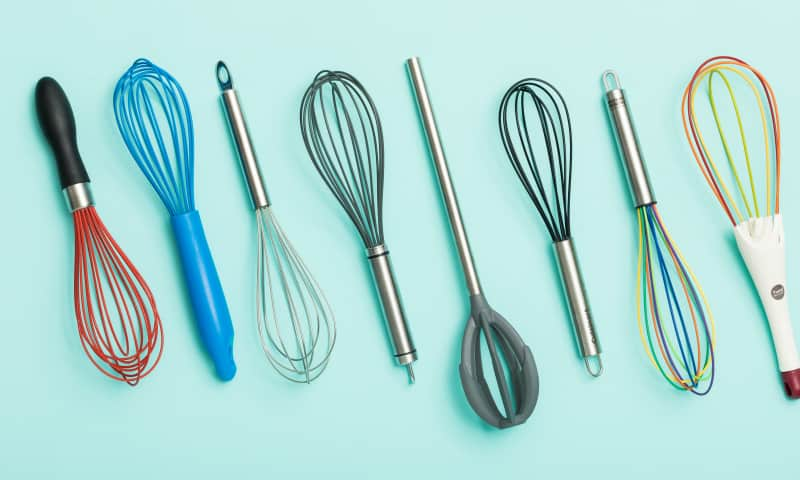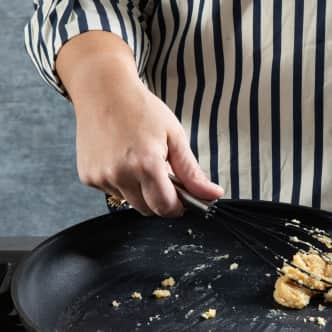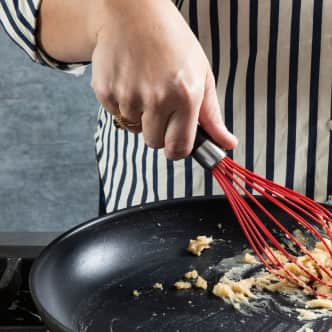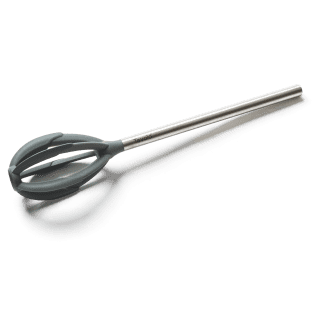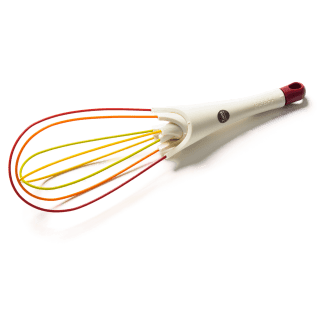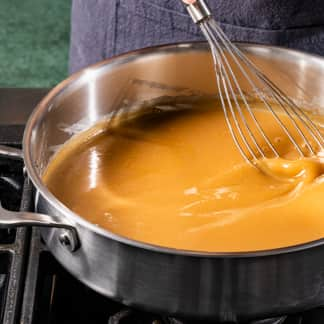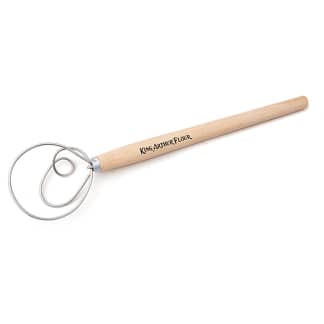Nonstick whisks are designed to keep delicate cookware scratch-free. In the test kitchen, we often use them when we’re whisking and blending recipes such as pan sauces or roux in a nonstick-coated skillet or enameled Dutch oven. They’re built like traditional wire whisks, but each loop is coated in silicone to be gentler on pans.
The trouble is, badly designed nonstick whisks can feel sluggish—the antithesis of an agile, whippy whisk. We tested eight models, priced from about $7.50 to about $20.00, to find one that blends efficiently; won’t scratch pans; feels natural; and doesn’t cause fatigue, especially when we’re whisking for extended periods. Since we use them over heat, we wanted designs that kept our hands cooler. And because they do hard work, we wanted durable whisks that hold their shape and are easy to clean. Most of the whisks in our lineup were traditionally shaped, but two were innovative. One switched with a twist of a knob at the end of its handle from a flat whisk to a balloon whisk, and another’s spherical head resembles a silicone cage with five wide scraping blades on a long handle.
We put them all through a series of tests, starting with roux. We used each whisk to blend flour into melted butter, and then we gradually added broth while whisking constantly for several minutes to prevent lumps from forming in the roux as it thickened. We did this in both a shallow nonstick skillet and a deeper enameled cast-iron Dutch oven to see how the whisks performed on two different cooking surfaces and at two different angles of approach. Some whisks weren’t able to prevent or break up doughy clumps, while others kept the mixtures smooth by quickly breaking up any lumps that did form. While we didn’t want floppy whisks that couldn’t push food, we also didn’t want stiff whisks that struggled to get into pan corners and couldn’t flex and flatten as needed to optimize contact with the roux mixture; moderately flexible whisks performed best. But there was more to the equation.
